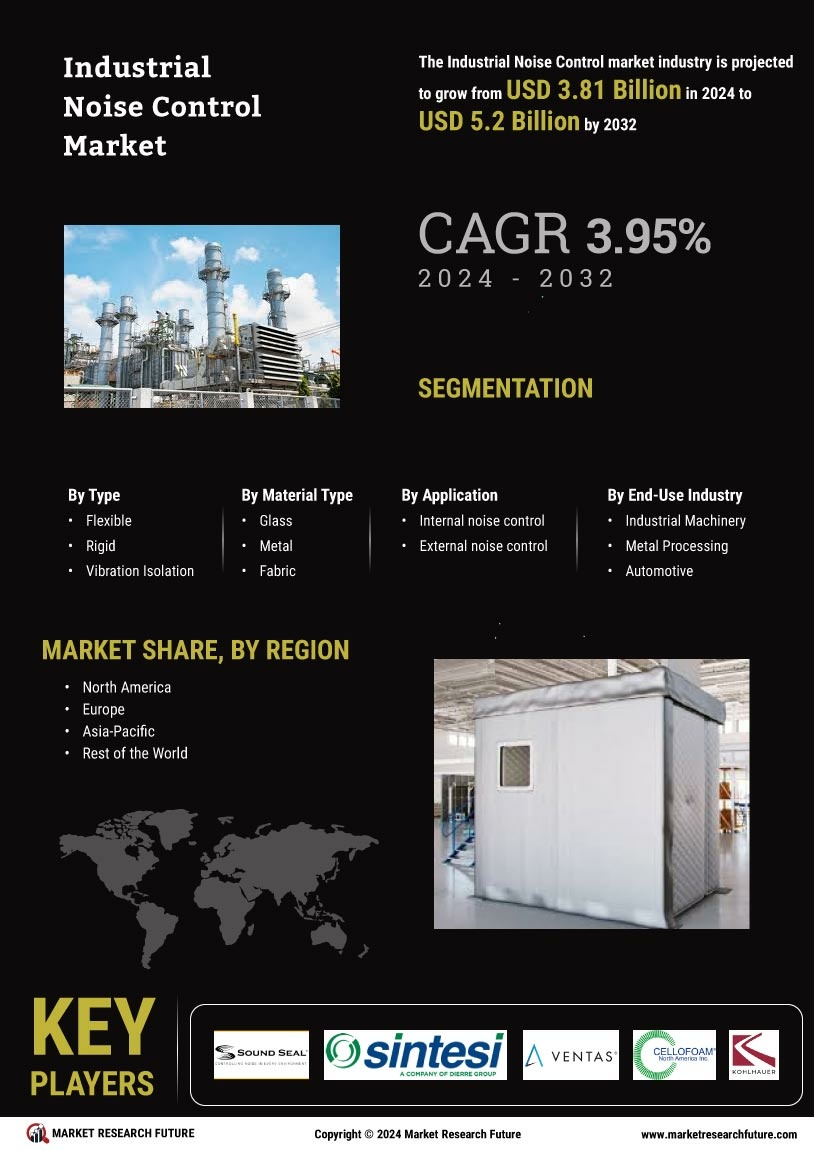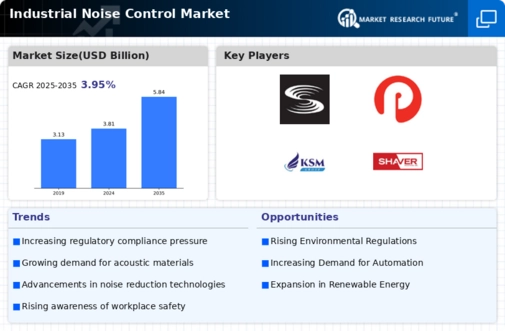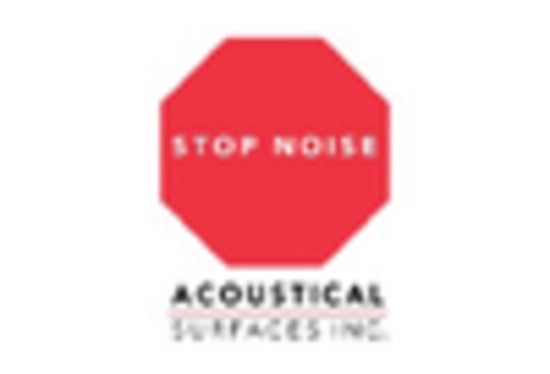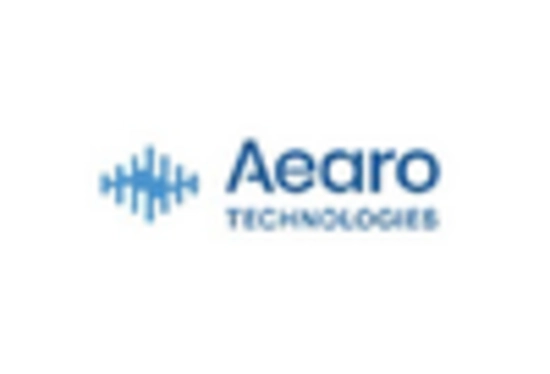Growth of the Manufacturing Sector
The Industrial Noise Control Market is poised for growth, driven by the expansion of the manufacturing sector. As manufacturing activities increase, so does the generation of industrial noise, prompting companies to seek effective noise control solutions. The manufacturing sector is projected to grow at a compound annual growth rate of 4.5% over the next five years, leading to heightened demand for noise control technologies. Industries such as automotive, aerospace, and electronics are particularly focused on implementing noise reduction measures to enhance product quality and worker safety. This trend is likely to result in increased investments in noise control equipment and services, thereby bolstering the Industrial Noise Control Market. As manufacturers prioritize operational efficiency and compliance with noise regulations, the market is expected to witness substantial growth.
Increasing Awareness of Occupational Health
The Industrial Noise Control Market is significantly influenced by the growing awareness of occupational health and safety among employers and employees. Organizations are recognizing the detrimental effects of excessive noise exposure on worker health, including hearing loss and stress-related issues. This awareness has led to a proactive approach in implementing noise control measures, thereby driving demand for effective solutions. According to recent studies, nearly 22 million workers are exposed to hazardous noise levels each year, prompting regulatory bodies to enforce stricter noise control standards. Consequently, businesses are investing in noise control technologies to ensure compliance and safeguard employee well-being. This trend not only enhances workplace safety but also contributes to improved productivity, further propelling the growth of the Industrial Noise Control Market.
Regulatory Frameworks and Compliance Standards
The Industrial Noise Control Market is shaped by an evolving landscape of regulatory frameworks and compliance standards aimed at mitigating noise pollution. Governments and regulatory agencies are increasingly implementing stringent noise control regulations across various sectors, including manufacturing, construction, and transportation. These regulations mandate the adoption of noise reduction technologies and practices, compelling companies to invest in noise control solutions. For instance, the Occupational Safety and Health Administration (OSHA) has established permissible noise exposure limits, which necessitate the implementation of effective noise control measures. As a result, the demand for noise control products and services is expected to rise, as organizations strive to comply with these regulations. This regulatory push not only fosters a safer working environment but also drives innovation within the Industrial Noise Control Market.
Sustainability Initiatives and Environmental Impact
The Industrial Noise Control Market is increasingly influenced by sustainability initiatives and the need to minimize environmental impact. Companies are recognizing that excessive noise not only affects human health but also contributes to environmental degradation. As a result, there is a growing emphasis on developing eco-friendly noise control solutions that align with sustainability goals. Innovations in materials and manufacturing processes are being pursued to create products that are both effective in noise reduction and environmentally responsible. This shift towards sustainability is likely to attract investments and drive demand for noise control technologies that meet environmental standards. Furthermore, as consumers become more environmentally conscious, businesses are compelled to adopt sustainable practices, further propelling the growth of the Industrial Noise Control Market.
Technological Innovations in Noise Control Equipment
The Industrial Noise Control Market is experiencing a surge in technological innovations that enhance noise reduction capabilities. Advanced materials, such as sound-absorbing composites and acoustic panels, are being developed to improve performance. For instance, the integration of smart technologies, including sensors and automated systems, allows for real-time monitoring and adjustment of noise control measures. This trend is likely to drive market growth, as companies seek to adopt cutting-edge solutions to meet stringent noise regulations. Furthermore, the global market for noise control equipment is projected to reach USD 10 billion by 2026, indicating a robust demand for innovative products. As industries increasingly prioritize noise management, the adoption of these technologies is expected to accelerate, positioning the Industrial Noise Control Market for substantial expansion.


















Leave a Comment